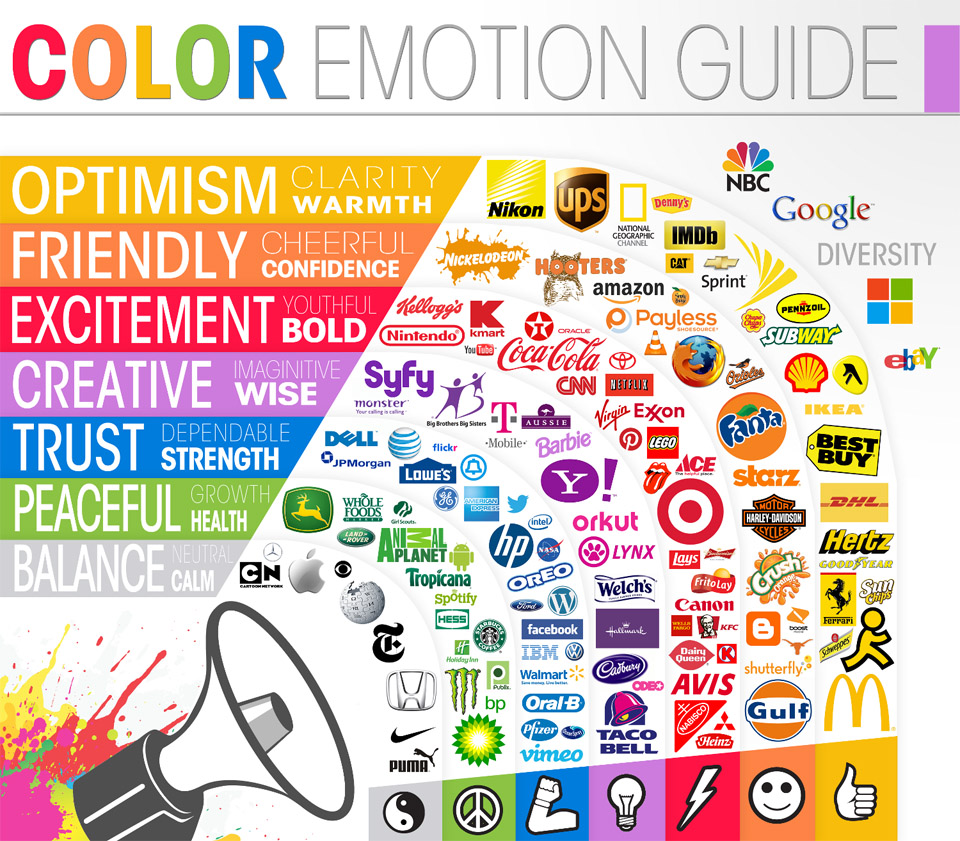Color psychology studies the effect of colors on human behavior. As part of psychology, understood as a medical science, it is considered an immature discipline. Nevertheless, in other fields such as design, fashion, advertising or architecture, its study is taken into account.
Origin of color psychology
The history of color begins with Aristotle and his discovery of what he called “basic colors”. These colors are related to water, sky, earth and fire. After some time, Leonardo Da Vinci, based on Aristotle’s definition of the basic colors, classified them into yellow, blue, green and red and added two others, white as the receiver of all colors and black, representing the absence of them. Already in the 18th century, Isaac Newton showed that white light is formed by a band of colors, which can be separated by means of a prism and not that the prism produced these colors as previously believed.

Wolfgang Goethe, a German poet and scientist, initiated what we know today as color psychology. In his treatise “Theory of color” and opposing Newton’s perspective that said that color was something strictly physical, he indicates that what we see of an object is conditioned by our own perception and not only by its physical characteristics.
Currently, the most highly valued study on color theory is that of the German sociologist and psychologist Eva Heller (1948-2008), in which she develops the relationship between colors and the feelings or sensations they transmit. Relationships that, far from being casual, are inherent to our own language and thinking.
Uses of color theory
Color is fundamental in the appearance of a product as well as in brand recognition. For this reason, the use of color theory is essential in the field of marketing and advertising. In fact, there are different studies that indicate that the initial evaluation of a product is given in the first 90 seconds of interaction with the consumer and between 62% and 90% of that evaluation is based on the appearance of the object.
In the case of a brand’s logo, its color defines the brand’s personality and, ultimately, the brand’s personality influences the purchase intention.

Despite the importance of color psychology in advertising and the different studies that support a certain relationship between color and the sales process, it would be a mistake to make generalizations. This is because the same color can have different effects on different people, depending on their sex, age or culture.
Meaning of colors
The following is a list of the main concepts with which the most widespread colors are associated:
- YellowThe color of the sun. It is associated with optimism, happiness, intellect and energy.
- RedRed: The color of blood and fire. It is linked to strength, danger, love and power.
- BlueThe color of the sky. Symbolizes loyalty, wisdom, trust and truth.
- OrangeCombines the sensations of red and yellow evoking happiness, creativity, success, fascination or enthusiasm.
- GreenThe color of nature and therefore of growth, harmony, freshness and fertility.
- VioletViolet : Combines red and blue indicating power, nobility, luxury, creativity and independence.
- WhiteWhite: It is associated with light and, by extension, with goodness, purity and innocence.
- Black: It is linked to death, evil or mystery, but also to elegance and power.
Color in lighting
The color or, more precisely, the color temperature of the lighting directly affects our mood and favors certain emotional responses. The color of the light can have a decisive influence on our mood.
Warm light colors are recommended in rooms such as bedrooms or living rooms, as they help to create a cozier atmosphere. In turn, a cold light is used in kitchens, offices or schools because this bluer shade of light favors concentration.
When choosing the lighting for a room, we must take into account the activities that will be carried out in it.
We also have RGB lights that allow us to illuminate with any color we want and that would give us different sensations in the room depending on the color chosen.
As we see, although each person may react to a color differently, according to the psychology of color there is a certain consensus, especially among individuals with a similar cultural background, regarding the sensations transmitted by one color or another.

